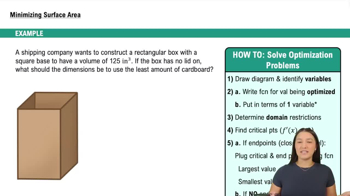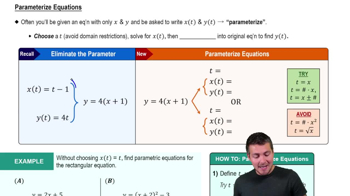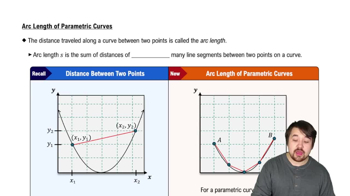A right circular cylinder with height R and radius R has a volume of VC=πR^3 (height = radius).
b. Find the volume of the hemisphere that is inscribed in the cylinder with the same base as the cylinder. Express the volume in terms of VC.
 Verified step by step guidance
Verified step by step guidance Verified video answer for a similar problem:
Verified video answer for a similar problem:



 5:38m
5:38mMaster Introduction to Cross Sections with a bite sized video explanation from Patrick
Start learning